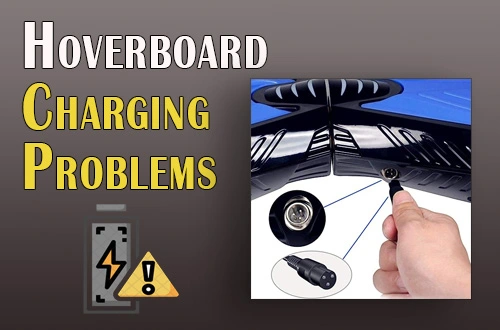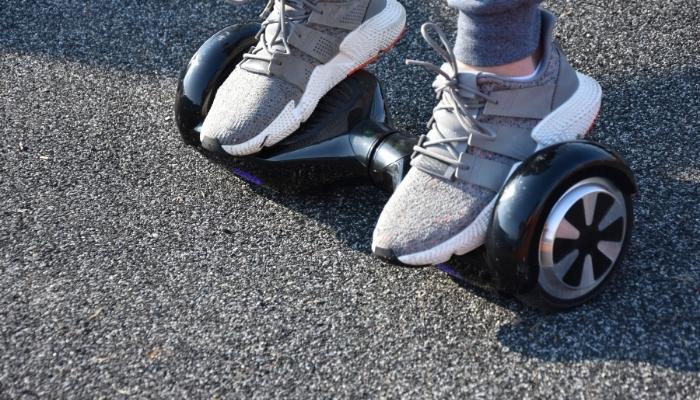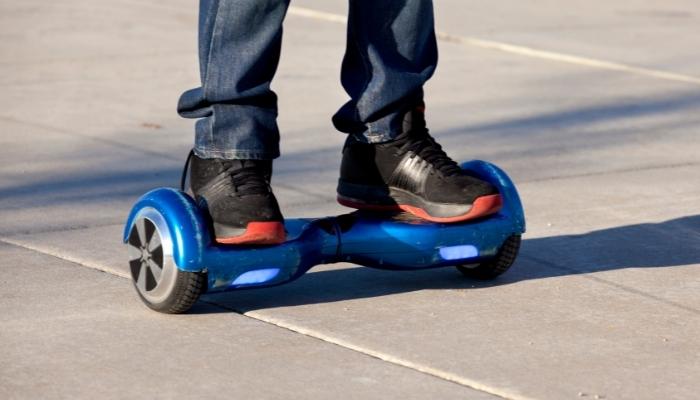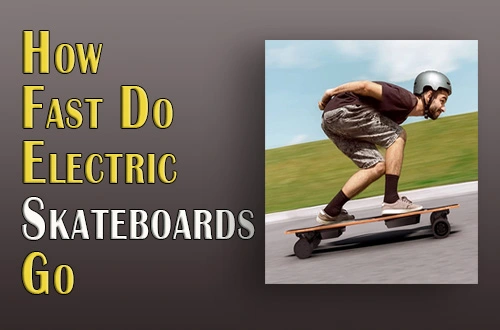Does A Moving Skateboard Have Energy? | Yess Or Not |
Last Updated on July 6, 2024 by BoardsRiding
For once, you pondered what forces propelled a skateboard. They could be generated by the skateboard’s wheels, the rider’s kicks, or some other source of energy. Does a moving skateboard have energy? Yes, because it moves, which produces energy. When the wheels move, the energy is liberated and becomes kinetic.
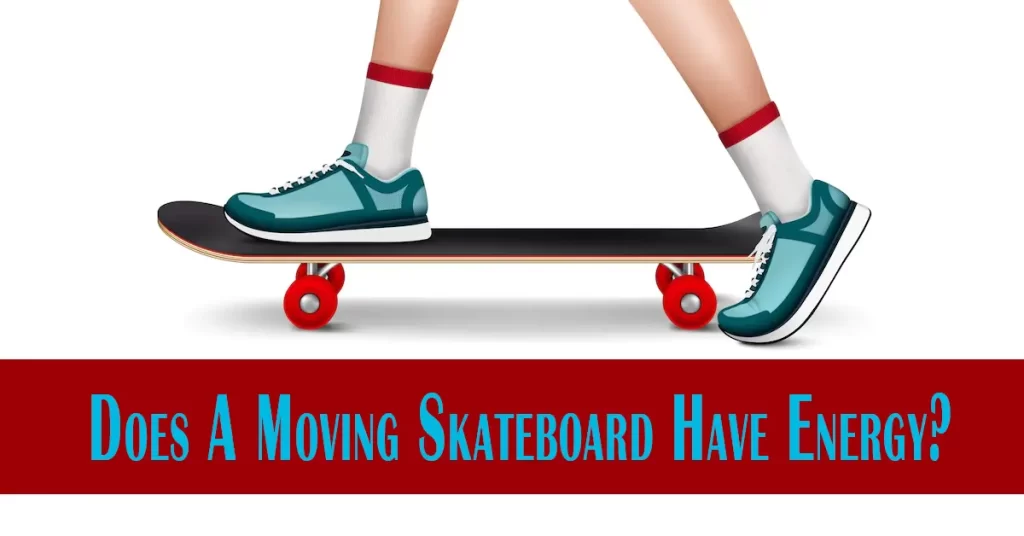
You had to convert potential energy to kinetic energy in order to transport the energy. Kinetic energy is an object’s ability to move. This is evaluated in joules & represents its work done by such a force over time, or the quantity of energy transferred from one item to another.
Kinetic energy can be turned into mechanical or electrical power, for example. Kinetic energy is classified into two types: potential & actual (or kinetic). Greater potential kinetic energy equals more movement possibilities & control over the skateboard.
Does A Moving Skateboard Have Energy?
An energy transferred from the skater’s feet to a board propels a skateboard. The skater’s potential and kinetic energy provide this energy. Whenever a person or object moves, kinetic energy is created. It’s similar to mechanical energy, but that can be transferred more quickly into other forms.
Possessing more kinetic energy allows you to move faster and using more force.
Having a great deal of kinetic energy has various advantages (like increased safety). You may learn about kinetic energy via investigating several instances from everyday life.
Kinetic Energy
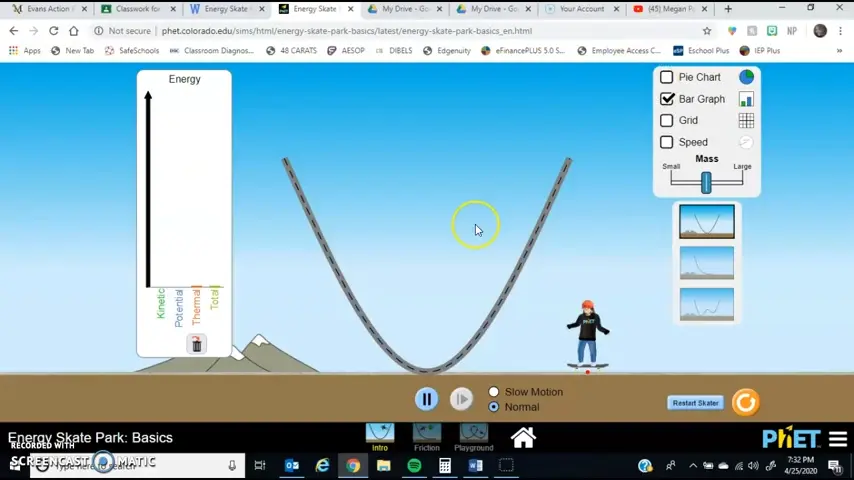
A skateboard does not contain the same quantity of kinetic energy as a moving car, but it does have some. Skateboarding is a wonderful way to burn off excess energy while remaining healthy and active. If you’re concerned about your safety while skating, wear protective gear such as pads and helmets. You can also expend kinetic energy through playing computer games or engaging in other physical activities.
Also Read This: 8 Best Female Skateboarders In The World
What Is The Mechanism Of kinetic Energy?
Kinetic cost is the total of all potential energy which a thing has. Whenever an object is moving, some of the kinetic energy is transferred to electrical electricity in various sections of its system, most notably when this bounces off the surface as well as emits sound waves as it moves through air.
Items with such a lot of kinetic energy may cause severe damage if not handled appropriately, such as by smashing in things or even being flung upon a moving skateboard.
What Does It Signify In Terms Of A Skateboard?
A skateboard operates on two types of energy: kinetic and potential. When the wheels roll, kinetic energy is generated and used to push the board forward as well as backward. When you’re not using your skateboard, such as when it’s parked on such a curb or leaning against a wall, potential energy is contained in it.
When you begin skating, your kinetic and potential energies work together to generate power and motion for your hands and feet to use to control the board. If you suddenly stop skating, your kinetic energy would disappear quickly, but your potential energy will remain because you haven’t done an action to use it up, such as jumping off a ramp.
Is Kinetic Energy Identical As Mechanical Energy?
Whenever it involves moving objects, kinetic energy is equivalent to mechanical energy. Kinetic energy could be turned into heat or light, for example. If you want an object to move forward and then backward, it must retain kinetic energy. Objects with such a lot of kinetic energy often are referred to as „moving machines. Understanding energy and how to employ it can assist you in powering your own skateboard.
Is There Any Benefit To Having Greater Kinetic Energy?
Having extra kinetic energy within your life has a few perks. Greater kinetic energy can result in improved physical health and productivity. It’s also known to boost concentration and focus as well as happiness. More kinetic energy may potentially assist you in losing weight or break undesirable habits more quickly. So, if you want to improve your life, go for a superior stage of kinetic energy.
Running Energies On A Skateboard
Kinetic energy refers to the energy stored in a skateboard that is in motion. Skateboards that are idle at their places, on the other hand, have potential energy.
Getting On A Skateboard
Assume you’re coming down a skate ramp on your skateboard. The deck’s tail is fastened to the steel coping by your rear foot. There’s no mechanical effort or motion present, only your posture. Potential is the energy which rests just on a skateboard just at top of a ramp.
However, once the skateboard’s front truck bolts are pressed and the front wheels keep in touch with the ramp, the entire stored potential energy is converted to kinetic energy.
Riding A Skateboard
Another example would be simply moving your skateboard. This time, though, the skater’s kinetic energy is transferred from the body to the skateboard. When you propel your skateboard, your body, especially your legs, begins to do mechanical labor. The power transfers to the skateboard as immediately as your muscles generate power. The latter then reacts by going forward or accelerating.
Is Skating A Good Kind Of Exercise?
Skateboarding is an excellent type of exercise. Adrenaline is what makes it so enjoyable. Whenever you skate, the heart rate increases. The heart rate will continue to rise as you skate.
When your heart begins to beat quicker, you’re strengthening your cardiovascular system. Your muscles become toned and more flexible.
Why Does A Skateboard In Motion Have Energy?
Because it’s moving, a skateboard contains energy. When you move your skateboard, it takes up space & pushes it against the ground. The board moves as a result of this pushing force.
- A skateboard in motion has a significant amount of potential energy. This is due to the fact that the board is stationary on one side yet being pushed by the guy driving them.
- The object’s kinetic energy is also extremely high to its mobility.
- Friction is the force which keeps the board and together causes it to move (or static pressure).
- While users ride the moving board, a portion of this energy is transmitted to you, allowing you to go onward.
- Friction is determined by the smoothness and levelness of the surface, which influences how much potential and kinetic energy is exchanged as an item moves over it.
What Is The Source Of Energy For Skateboarding?
A skateboard can be powered by a variety of different energy sources. The most prevalent is electric, which runs on batteries. Other common energy sources include gasoline & propane tanks, that are used to generate the flame required to push the board.
- Skaters get their energy to move the boards from potential energy stored on their legs while they are standing stationary. When they begin to move, the potential energy is transformed into kinetic & thermal energy, which is then used to propel the board forward.
- Whenever users ride a ramp, the body converts Kinetic Energy (your movement) in Thermal Energy (heat). This heat could be captured by employing materials such as fiberglass or plastic, that allow for the more efficient heat transfer.
- Skateboards have several construction aspects that influence how fast and well they skate on surfaces including such ramps & streets. A stiffer deck, for example, can help you keep upright when skating but will not provide as much traction when turning around bends and going up hillsides.
- Materials used during skateboarding also can influence how often thermal energy is produced throughout riding sessions; for example, high-quality boards take in more heat versus low-quality decks because they include more fiberglass material.
- Because superior materials provide less friction, overall quality influences speed and traction.
What Forces Propel A Skateboard?
Skateboarding is a popular recreational sport that many people love. It entails riding on such a skateboard that is propelled forward by the user’s feet. Gravity and the rider’s weight are the forces that cause a skateboard to move. Gravity pulls downward upon this board, while a rider provides force to it by pushing it off the ground with their foot.
Gravity Pulls The Board Toward The Ground.
Gravity is the force which pulls a skateboard forward towards the ground. This force is responsible for keeping you linked to the board during skating.
The Weight Of The Skater Presses Down On The Board
Whenever a skater jumps/falls, their weight presses down on the board, causing it to roll ahead.
On Board, The Ground Pushes Up
The earth pushes up against the skateboard in all directions as it rolls, which keeps it moving ahead and causes friction between both the deck and your shoes (if you’re wearing them).
What Type Of Energy Is Included In A Moving Skateboard?
When you’re riding a skateboard, you’re continuously pushing & pulling against the ground. Gravitational potential energy is created as a result of this motion (GPE).
The Elastic Potential Energy Is Saved
The energy is stored inside the skateboard’s springs and rubber bands. This kinetic energy is transferred to elastic potential energy whenever you push down on the board. The elastic potential energy may be utilized to jump high or run fast. When you restart moving your feet, this kinetic energy is converted into physical force (elasticity), which is then used to propel the board ahead.
Conversion Of Energy
The faster you move your feet, more of the original kinetic energy is converted into elastic potential energy, which is then converted into heat when you stop or release off of the board. It’s critical not to come to an abrupt halt, as this will turn all your kinetic energy to heat. If you slow down, the friction between your hands and the surface will still generate heat- only at a slower rate.
What Exactly Is Energy From Motion?
- Kinetic is the amount of energy which an object possesses as a result of its motion.
- Kinetic energy is utilized to move objects or create forces.
- Kinetic energy always is preserved; it does not vanish when an item ceases to move.
Is Skating Kinetic Energy?
As the skateboarder glides through the air, kinetic energy is generated. A person’s kinetic energy at any particular time is determined by their height and weight. The skateboarder uses the same kinetic energy at the conclusion of each swing, regardless of how low or high they fall. Potential energy is transformed into kinetic energy throughout motion while skating; although, this conversion is not constant.
When a skateboarder hits their maximum potential Kinetic Energy (KE), you have depleted that resource and must begin generating new KE in order to continue moving.
What Is The Operation Of A Skateboard?
The skateboard is a vehicle with two major components: the truck as well as the deck. The truck is a massive metal piece that attaches to one end of the board, as well as the wheels are little, spherical pieces which rotate around it.
When you ride it, the lever here on deck presses on the trucks, allowing you control of how much pressure you apply to a ground. Some boards include „trucks“ constructed of plastic and rubber rather than metal, which makes them more flexible and allows them to travel faster on pavement and concrete surfaces.
Skateboards are available in a range of forms and sizes, ranging from extremely simple models for beginners to those with several decks, trucks & wheels.
FAQs:
Final Verdict:
There’re numerous sorts of moving skateboards, however not all of them are moving skateboards. There’re manual, electric, self-balancing, and motorised skateboards. Science plays an important role in skateboarding, from the physical characteristics of a skateboard to its inclinations.
We can’t go out on the road or into skate parks unless we understand how momentum and energy our rides affect. So does a moving skateboard have energy? Yes. It’s kinetic energy, which is present in moving objects. It’s otherwise potential energy. These ideas are straightforward, and it’s possible to pinpoint where these energies manifest.
I’m Mike Dave & Focused on Riding Boards we are on a mission to grow the love for different types of board riding. We want to build interest by providing complete guides of boards so, if you want to increase your knowledge about riding boards, this website is a perfect selection for you, do hit a survey on this website and you will surely love it.

